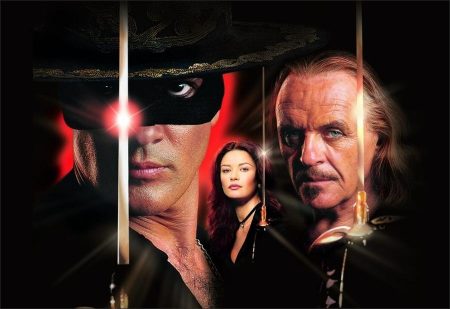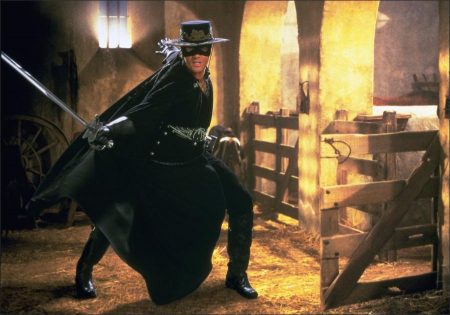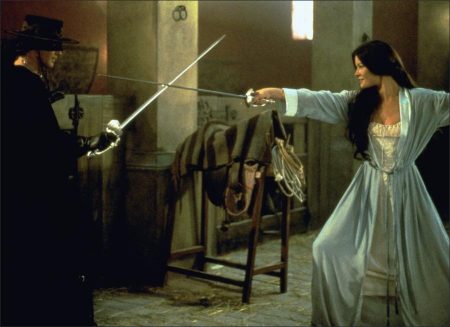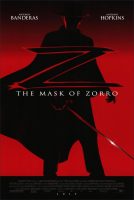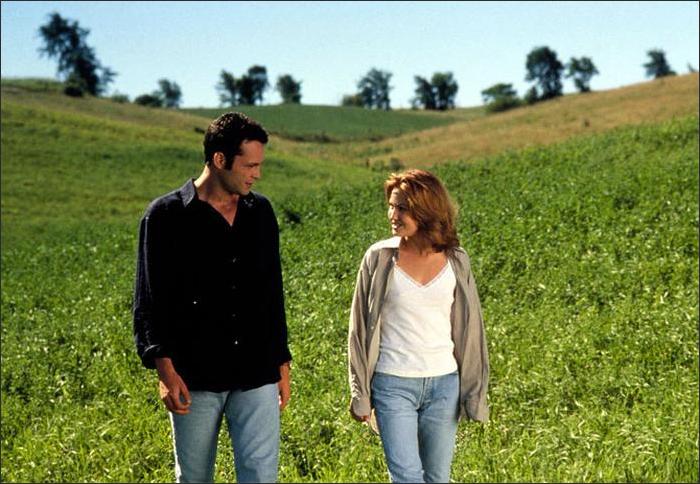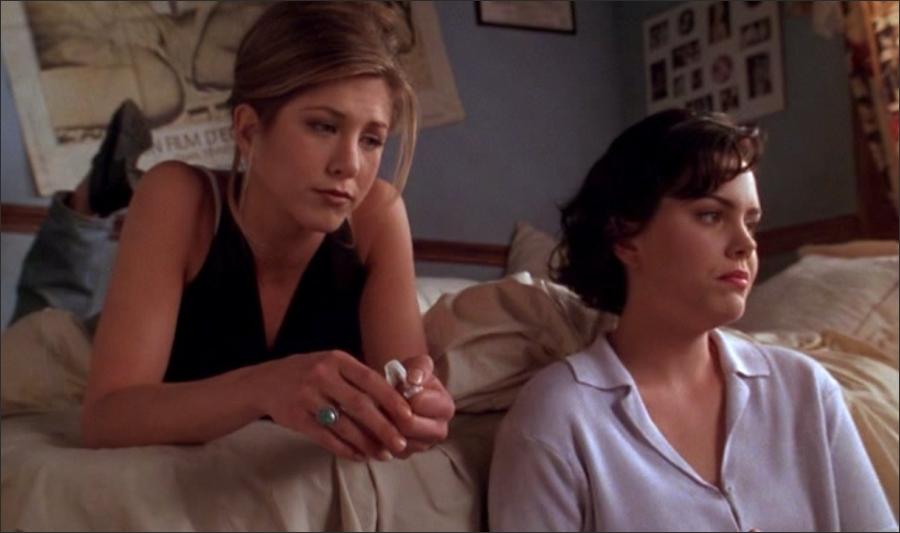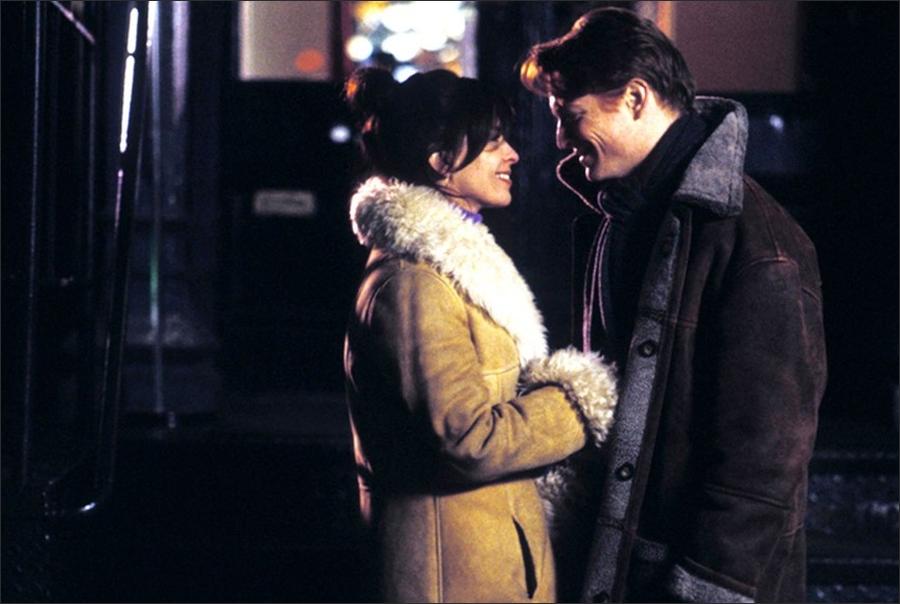Taglines: When freedom is a memory and justice is outlawed, the just must become outlaws.
The Mask of Zorro movie storyline. In 1821, Don Diego De La Vega (Anthony Hopkins), a Californio nobleman fights against the Spanish in the Mexican War of Independence as Zorro, a mysterious swordsman who defends the Mexican peasants and commoners of Las Californias. Don Rafael Montero (Stuart Wilson), the corrupt governor of the region, learns of De La Vega’s alter ego, and attempts to arrest him. De La Vega’s wife is killed during the scuffle. Montero imprisons De La Vega and takes his infant daughter, Elena, as his own.
Twenty years later Montero returns to California as a civilian, alongside Elena (Catherine Zeta Jones), who has grown into a beautiful woman. Montero’s reappearance motivates De La Vega to escape from prison. He encounters a thief, Alejandro Murrieta (Antonio Banderas), who, as a child, once did Zorro a favor.
De La Vega decides that fate has brought them together, and agrees to make Alejandro his protégé, grooming him to be the new Zorro. Alejandro agrees to undergo De La Vega’s training regimen in Zorro’s lair underneath the ruins of his family estate in order to be able to take revenge on Captain Harrison Love (Matt Letscher), Montero’s right-hand man, who was responsible for killing Alejandro’s brother, Joaquin.
While still being trained, Alejandro steals a black stallion resembling Tornado from the local garrison. De La Vega scolds Alejandro, claiming that Zorro was a servant of the people, not a thief and adventurer. He challenges Alejandro to gain Montero’s trust instead. Alejandro poses as a visiting nobleman named Don Alejandro del Castillo y García, with De La Vega as his servant, and attends a party at Montero’s hacienda.
At the party he gains Elena’s admiration and enough of Montero’s trust to be invited to a secret meeting where several other noblemen are present. Montero hints at a plan to retake California for the Dons by buying it from General Santa Anna, who needs money to fund his upcoming war with the United States.
Montero takes Alejandro and the noblemen to a secret gold mine known as “El Dorado”, where peasants and prisoners are used for slave labor. Montero plans to buy California from Santa Anna using gold mined from Santa Anna’s own land. De La Vega uses this opportunity to become closer to Elena, though he identifies himself as “Bernardo” the servant, learning that Montero told Elena that her mother died in childbirth.
While walking in a market, Elena meets the woman who was her nanny who tells Elena her parents’ real identity. De La Vega sends Alejandro, dressed as Zorro, to steal Montero’s map leading to the gold mine. Zorro duels Montero, Love, and their guards at the hacienda. When Zorro escapes, Elena attempts to retrieve Montero’s map from the swordsman, but he seduces her, leading to a passionate kiss before he flees.
The Mask of Zorro is a 1998 American swashbuckler film based on the character of the masked outlaw Zorro created by Johnston McCulley. It was directed by Martin Campbell and stars Antonio Banderas, Anthony Hopkins, Catherine Zeta-Jones, and Stuart Wilson. The film features the original Zorro, Don Diego de la Vega (Hopkins), escaping from prison to find his long-lost daughter (Zeta-Jones) and avenge the death of his wife at the hands of the corrupt governor Rafael Montero (Wilson). He is aided by his successor (Banderas), who is pursuing his own vendetta against the governor’s right-hand man while falling in love with de la Vega’s daughter.
Producer Steven Spielberg had initially developed the film for TriStar Pictures with directors Mikael Salomon and Robert Rodriguez, before Campbell signed on in 1996. Salomon cast Sean Connery as Don Diego de la Vega, while Rodriguez brought Banderas in the lead role. Connery dropped out and was replaced with Hopkins, and The Mask of Zorro began filming in January 1997 at Estudios Churubusco in Mexico City, Mexico.
The film was released in the United States on July 17, 1998 to financial and critical success. The Legend of Zorro, a sequel also starring Banderas and Zeta-Jones and directed by Campbell, was released in 2005, but did not fare as well as its predecessor.
The principal photography for the film began in Mexico on January 27, 1997 on a $60 million budget. The Mask of Zorro was mostly shot at Estudios Churubusco in Mexico City. Production stalled for four days in February when the director, Martin Campbell, was hospitalized for bronchitis.
Filming resumed in Tlaxcala, three hours east of Mexico City, where the production crew constructed the Montero hacienda and town set pieces. Sony sent David Foster to join the project as a producer to help fill the void left by Steven Spielberg, Walter F. Parkes, and Laurie MacDonald, who were busy running DreamWorks. Foster and David S. Ward, who went uncredited, re-wrote some scenes; the troubled production caused The Mask of Zorro to go $10 million over its budget.
In December, the producers were frustrated by customs agents when some props and other items, including Zorro’s plastic sword, were held for nine days.[32] During the post-production phase, Spielberg and Campbell decided that Diego de la Vega’s death in the arms of his daughter was too depressing.[36] The ending, where Alejandro and Eléna are happily married with their infant son, was added three months after filming had ended.
The Mask of Zorro (1998)
Directed by: Martin Campbell
Starring: Antonio Banderas, Anthony Hopkins, Catherine Zeta-Jones, Stuart Wilson, Tony Amendola, Matt Letscher, William Marquez, María Fernández Cruz, Pedro Altamirano
Screenplay by: John Eskow, Ted Elliott, Terry Rossio
Production Design by: Cecilia Montiel
Cinematography by: Phil Meheux
Film Editing by: Thom Noble
Costume Design by: Graciela Mazón
Set Decoration by: Denise Camargo
Art Direction by: Michael Atwell
Music by: James Horner
MPAA Rating: PG-13 for some intense action and violence.
Distributed by: TriStar Pictures
Release Date: July 17, 1998
Hits: 233
